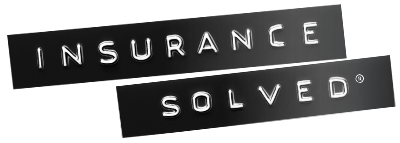Choose From 3 Levels of Cover - That’s Insurance Solved®
Insure your pets with our top level of cover. We offer routine care options, accidental injury and illness cover and our highest annual benefit limit for eligible vet bills.
Plus Pet Insurance includes:
-
Routine Care options
-
$25,000 policy limit
-
Orthopaedic cover
-
Accidental injury and illness
Insure your pets with our comprehensive cover. We offer routine care options, accidental injury and illness cover and a generous annual benefit limit for eligible vet bills.
Comprehensive Pet Insurance includes:
-
Routine Care options
-
$15,000 policy limit
-
Orthopaedic cover
-
Accidental injury and illness
Insure your pets with our most basic level of cover. We offer accidental injury and illness cover and a substantial annual benefit limit for eligible vet bills.
Essential Pet Insurance includes:
-
Routine Care options
-
$12,000 policy limit
-
Orthopaedic cover
-
Accidental injury and illness
Terms, Conditions, Limits and Exclusions apply. See the Product Disclosure Statement (PDS) for full details.
Why Choose Cat Insurance
We know that as caring pet owners, your main priority is your cat's health when purchasing pet insurance cover. With Budget Direct, you can choose from three different levels of Cat Insurance cover.
Our Comprehensive and Plus Insurance policies offer two levels of optional Routine Care cover. Cat Insurance can help protect your cat's health.
Common Cat Illnesses and Injuries
Budget Direct Cat Insurance covers a wide range of common illnesses and accidental injuries (unless they’re pre-existing).
Illnesses
-
Cancer
-
Ear infection
-
Cat flu
-
Skin allergy
-
Conjunctivitis
-
Diabetes
-
Gastroenteritis
-
Heart disease
-
Urinary tract disease
-
Kidney disease
Accidental Injuries
-
Snake bite
-
Foreign object ingestion
-
Bite wounds
-
Heat stroke
-
Cuts, grazes and lacerations
-
Eye trauma
-
Fractures and ligament damage
-
Poisoning (for example, snail bait)
-
Torn or broken nails
-
Burns or electrocution
Terms, conditions, limits and exclusions apply. Please read this Product Disclosure Statement (PDS) for full details on what's covered by Budget Direct Pet Insurance.
Get a Quote Online and Save 15%^
If you get a quote and buy a new Pet Insurance policy online, we will give you a 15%^ discount on your first year's premium.
Award-Winning Australian Pet Insurance
Budget Direct has been awarded Canstar’s Outstanding Value Pet Insurance and Outstanding Value Pet Insurance with Routine Care 2024 Awards. Canstar’s Pet Insurance Awards recognises providers who deliver outstanding value pet insurance products to Australian consumers.
We are also the winner of The Mozo Exceptional Value Comprehensive Pet Insurance award for our Comprehensive and Plus products and the Exceptional Value Accident & Illness Pet Insurance for all three Pet Insurance products.
What's covered by Cat Insurance?
While you focus on your pet's health, Budget Direct Cat Insurance can provide accidental injury or illness cover for costs including:
-
Vet expenses
-
Routine Care Cover (Optional Extra)
-
Orthopaedic conditions
-
Cruciate ligament conditions
-
Tick paralysis
-
Snake attacks
-
Bilateral conditions (if eligible for cover)
-
Accidental injuries
-
Illness (excluding pandemic or epidemic illnesses)
What's not covered by Cat Insurance?
Budget Direct Pet Insurance won't cover you and your pet for every circumstance. There are exclusions, including:
-
Pre-existing conditions
-
Dangerous pets
-
Behavioural conditions
-
Brachycephalic conditions (if evident during the first 12 months of the pet’s life)
-
Complications from not desexing or other excluded conditions
-
Parasites
-
Undiagnosed conditions or inconclusive diagnoses
-
Unvaccinated pets
Terms, conditions, limits and exclusions apply. Please read the Product Disclosure Statement (PDS) for full details on what's covered by Budget Direct Pet Insurance.
If your furry friend suffers from an accidental injury or illness and you need to make a claim, we're here to help.
With Budget Direct, you can conveniently make a claim online at any time of the day or night, 365 days a year. Or you can call us from Monday to Friday, 8am-5pm AEST at 1800 931 664 and we’ll be happy to help.
Find Out More
The information on this page is a summary only. For more details about Budget Direct Pet Insurance, including the terms, conditions, limits and exclusions that apply, please read the Product Disclosure Statement (PDS).
Cat Insurance FAQs
Yes, Budget Direct Pet Insurance offers competitive cover for all cats and we don’t distinguish between indoor and outdoor cats. Pet insurance is there to cover any unforeseen illnesses or accidental injuries.
Budget Direct Pet Insurance is available for kittens over eight weeks old. Some people prefer to insure their kittens as early as possible when they’re less likely to have pre-existing conditions and therefore they’ll be less likely to have limitations around what’s covered in their pet insurance policy.
To apply for Budget Direct Pet Insurance your kitten must be over eight weeks old. This is similar to most pet insurers.






